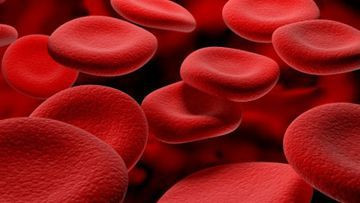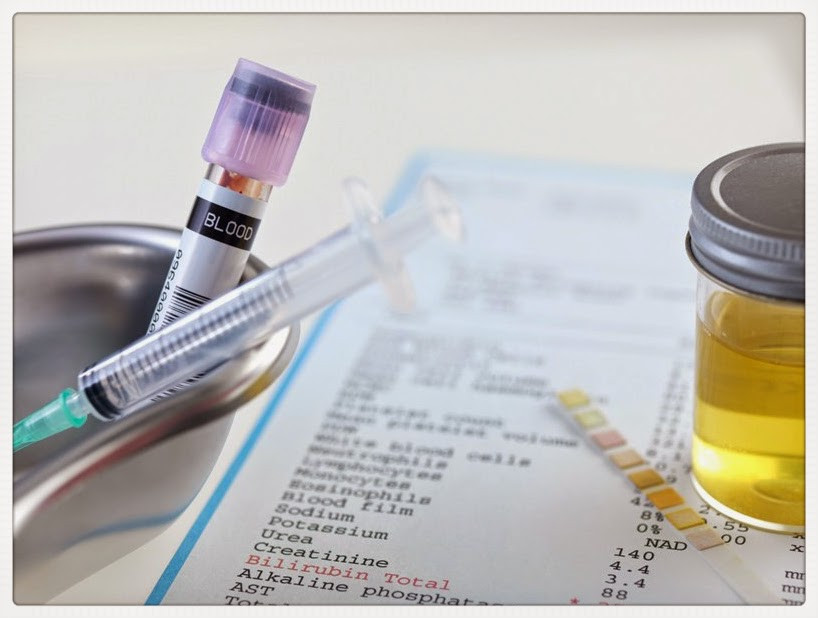Definition
Thalassemia in children is a blood disorder inherited from parents who carry the thalassemia gene. The disease results in the body producing less hemoglobin, a protein rich in iron found in red blood cells, than normal. As a result, individuals affected by thalassemia lack sufficient hemoglobin, leading to impaired functioning of red blood cells in delivering oxygen to tissues.3
Since thalassemia impacts hemoglobin production, children with this condition can experience mild to severe anemia. Anemia is characterized by a deficiency of red blood cells in the body.
Thalassemia presents several types, categorized by symptom severity, the necessity of blood transfusions in children, and the genetic disorder type causing the disease. Less severe forms typically do not demand aggressive treatment. Conversely, certain types mandate lifelong blood transfusions and other therapies for affected children.
Thalassemia affects both sexes and is most commonly found among people of Middle Eastern, South Asian, Italian, Greek, and African descent. Approximately 300 million people worldwide carry the thalassemia gene, putting them at risk of having children with thalassemia. The most severe form of thalassemia is often diagnosed in early childhood.
Causes
In thalassemia, there is a disruption in the hemoglobin of red blood cells. Normal hemoglobin consists of four protein chains, namely:
- 2 alpha globin protein chains
- 2 beta globin protein chains
Each of these protein chains is encoded by genetic information (genes) inherited by the child from their parents. The alpha globin protein chain consists of four genes, and the beta globin protein chain consists of two genes, all producing hemoglobin protein. When there is a disorder, such as a mutation in one of these genes or the loss of a gene, a child can experience thalassemia.
Types of thalassemia depend on abnormalities in the genetic components of the alpha or beta-globin protein chains. Below are some types of thalassemia.
Alpha Thalassemia
This condition occurs when one or more of the four alpha globin protein chain genes inherited from parents have a defect. The number of defective genes will affect the severity of anemia experienced by the child.
- Silent carrier: This individual experiences the loss or damage of one alpha globin protein gene but can still function normally and show no symptoms.
- Alpha thalassemia minor occurs when two out of four alpha globin genes are damaged or lost, and the child may experience mild symptoms.
- Hemoglobin H disease occurs when three alpha globin genes are damaged or lost, leading to moderate to severe anemia and symptoms. Children with hemoglobin H disease usually show symptoms between 6 months to 10 years of age.
- Alpha thalassemia major: The most severe form of alpha thalassemia, where the child experiences damage or loss of all alpha globin genes. Babies with this condition typically die before or shortly after birth.
Beta Thalassemia
In this type of thalassemia, the globin-beta gene is disrupted. An individual inherits two globin-beta genes, one from each parent. If one gene is lost or damaged, the child may experience beta thalassemia minor, resulting in mild anemia.
However, if both globin-beta genes are lost or damaged, the child can experience moderate to severe anemia. The severe form of beta thalassemia is called beta thalassemia major, where both globin-beta genes undergo mutation. Children with beta-thalassemia major typically show signs and symptoms within the first 2 years of life.
Risk factor
Thalassemia is an inherited disease passed down within families; children inherit it from their parents. When one parent, whether the father or mother, carries the thalassemia trait, a child can either become a carrier of the trait or experience thalassemia minor. However, if both parents carry the thalassemia trait, there is a greater risk for their child to suffer from a more severe form of the condition.
Symptoms
Thalassemia signs and symptoms correlate with the number of genes involved or lost, influencing the severity of the condition. Below are the symptoms associated with different types of thalassemia:
Thalassemia minor
Children with thalassemia minor, or those with the 'thalassemia trait,' exhibit damage or loss of two globin-α genes or one globin-β gene. Typically, individuals with the thalassemia trait do not manifest symptoms, although mild anemia may occur in some cases. Treatment is generally unnecessary.
Thalassemia intermedia
In children with Thalassemia Intermedia, one or both genes of the globin-β chain malfunction. They may experience varying degrees of anemia, and sometimes the condition goes undiagnosed until later in life.
Typically, regular monitoring is necessary, but routine blood transfusions are not required. Transfusions are administered when the individual's health declines or as they age. However, some children may receive regular transfusions to prevent complications. The most common symptoms are linked to anemia and excessive production of immature red blood cells.
Symptoms may include:
- Pale skin, lips, and hands
- Increased heart rate
- Shortness of breath
- Easy fatigue
- Dizziness or vertigo
- Headaches
- Irritability
- Menstrual irregularities
- Delayed growth and development
- Bone abnormalities
- Increased fracture risk
- Enlargement of the spleen or liver
Thalassemia major
Infants with Thalassemia Major may exhibit symptoms seen in milder forms of the disease, along with additional manifestations such as:
- Bone weakness leads to fractures and facial deformities.
- Enlargement of red blood cell production organs, such as the spleen and liver.
- Excessive iron accumulation as a consequence of recurrent blood transfusions.
Patients with Thalassemia Major typically necessitate regular blood transfusions, which can result in iron buildup in the body. Excess iron may lead to:
- Chronic fatigue
- Liver disease
- Abdominal pain
- Cardiac issues
- Joint pain
Diagnosis
Thalassemia is diagnosed primarily through blood tests, which typically reveal low hemoglobin levels and abnormally small red blood cells. Confirmation of the diagnosis usually involves abnormal hemoglobin type testing, known as hemoglobin electrophoresis, although genetic testing may sometimes be necessary.
Family genetic testing can aid in diagnosis, as children inherit the globin-α or globin-β genes from their parents. This process entails gathering family medical history data and conducting blood tests on family members to assess their globin-α or globin-β levels.
For parents known to carry the thalassemia gene who are expecting a child, early pregnancy testing is recommended. This involves analyzing amniotic fluid or placental tissue samples to detect thalassemia in the fetus.
Management
When a child is diagnosed with thalassemia, their treatment often involves a multidisciplinary team of specialists to ensure the best possible care tailored to the child's condition. Treatment strategies are adjusted based on the severity of the disease, which is assessed by doctors evaluating the degree of anemia, ranging from mild to severe, determined by the child's hemoglobin levels.
The primary therapy for children with moderate to severe alpha or beta thalassemia is red blood cell transfusion, which replenishes the body with healthy cells containing normal hemoglobin. Since transfused red blood cells typically have a lifespan of about a month, repeated transfusions every 3 to 4 weeks are necessary to maintain an adequate supply of red blood cells in the body.
Hemoglobin, an iron-rich protein found in red blood cells, necessitates regular blood transfusions in thalassemia patients. However, frequent transfusions can lead to iron accumulation, posing risks to vital organs like the heart and liver. Iron chelation therapy removes excess iron from the body to mitigate this risk. Additionally, supplementation with folic acid is often prescribed.
For children with severe thalassemia, stem cell transplantation offers a treatment avenue. This procedure involves replacing the child's abnormal stem cells with healthy ones from a compatible donor. While successful transplantation can obviate the need for lifelong transfusions, it comes with its own set of potential complications.
Complications
Severe thalassemia can lead to various complications, including growth and developmental delays, bone disorders like osteoporosis, and enlargement of the spleen and liver. Additionally, there's an increased risk of heart failure.
Excess iron accumulation can result from frequent blood transfusions and the disease itself. Excess iron can damage vital organs such as the heart, liver, and the child's endocrine system, which comprises glands producing hormones regulating bodily processes.
Moreover, children with severe thalassemia are susceptible to frequent and severe infections, particularly following multiple blood transfusions. Infections can be transmitted through the blood received during transfusions. To mitigate this risk, doctors rigorously screen blood transfusion donors.
Prevention
Thalassemia cannot be prevented, but genetic testing before pregnancy can determine if you or your partner carry the gene. This information is crucial for family planning decisions if you intend to have children.
When to see a doctor?
Contact a doctor if your child shows symptoms of thalassemia. Contact a genetic counselor for pregnancy planning if you suspect you or your partner may carry thalassemia gene mutations.
Looking for more information about other diseases? Click here!
- dr Hanifa Rahma
Thalassemia (pediatric): Columbiadoctors - New York (2022) ColumbiaDoctors. Available at: https://www.columbiadoctors.org/treatments-conditions/thalassemia-pediatric (Accessed: March 11, 2023).
Thalassemia (no date) Thalassemia | Boston Children's Hospital. Available at: https://www.childrenshospital.org/conditions/thalassemia (Accessed: March 11, 2023).
Thalassemia: Types, traits, symptoms & treatment (2022) Cleveland Clinic. Available at: https://my.clevelandclinic.org/health/diseases/14508-thalassemias# (Accessed: March 11, 2023).












